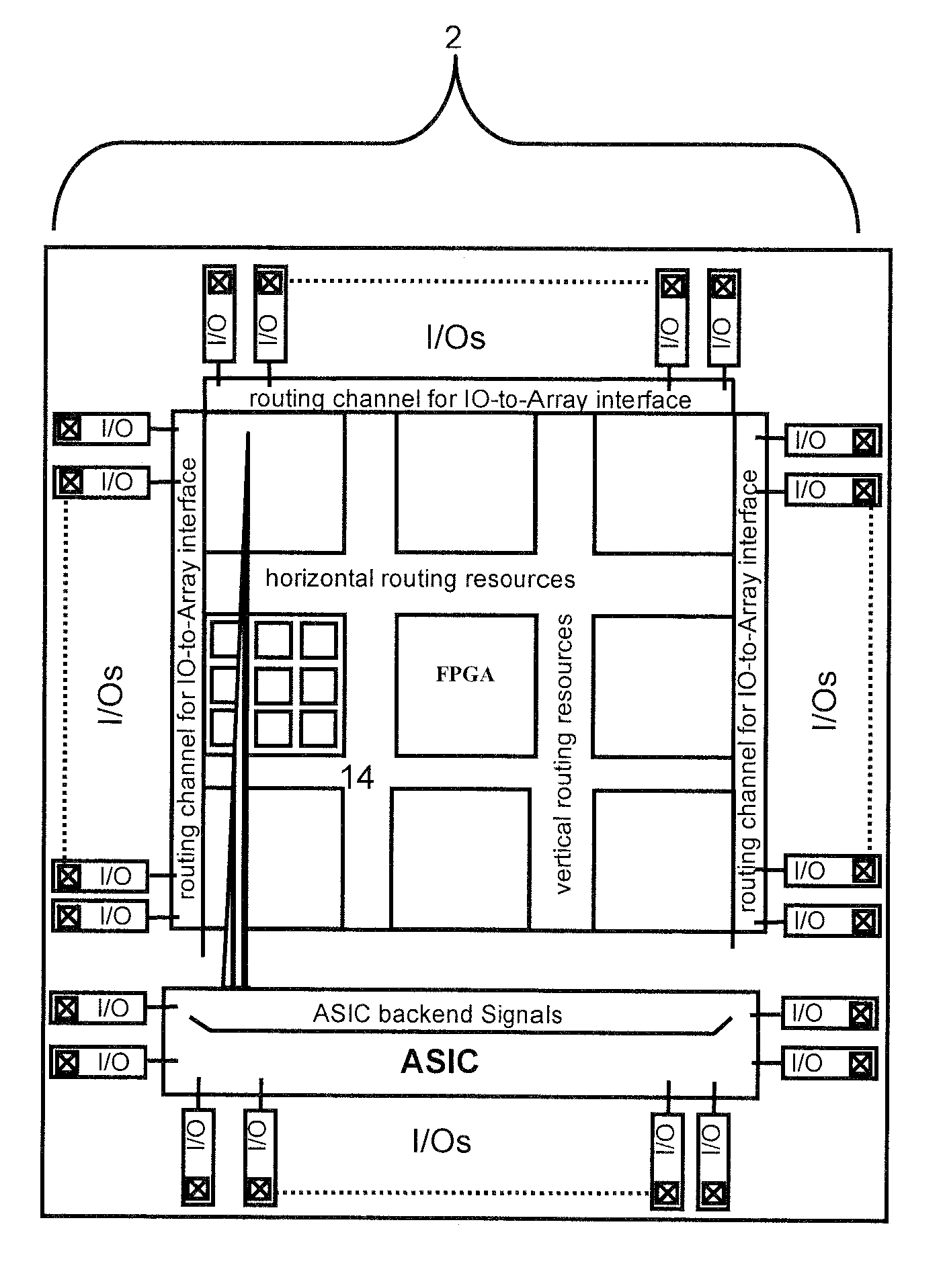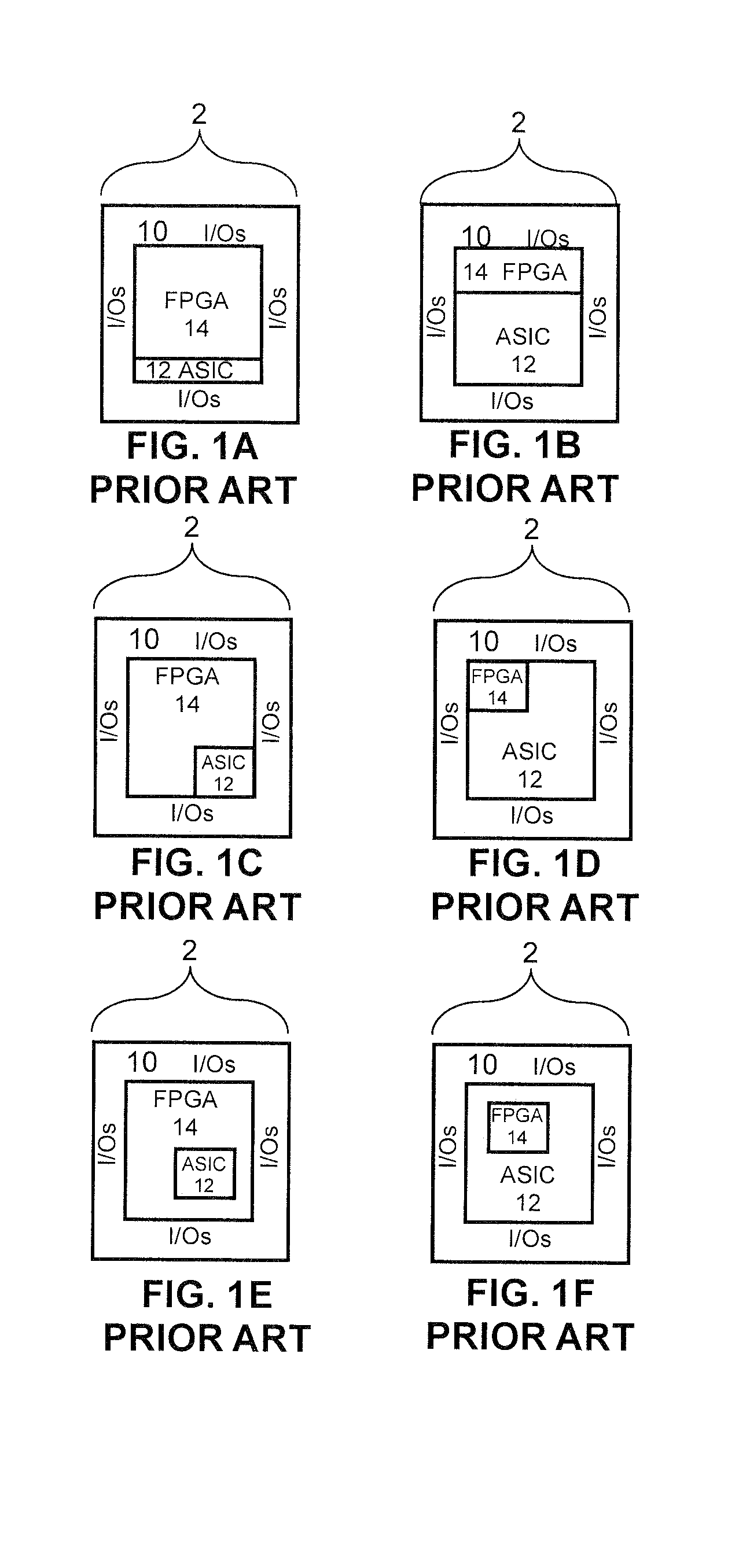Dedicated interface architecture for a hybrid integrated circuit
a hybrid integrated circuit and dedicated interface technology, applied in the field of hybrid integrated circuits, can solve the problems of complex design and testing phase of asics, many gates may go unusable, and interfaces run at relatively slow speeds, so as to achieve faster and more efficient communication and less congestion in the system
- Summary
- Abstract
- Description
- Claims
- Application Information
AI Technical Summary
Benefits of technology
Problems solved by technology
Method used
Image
Examples
Embodiment Construction
[0032]Those of ordinary skill in the art will realize that the following description of the present invention is illustrative only and not in any way limiting. Other embodiments of the invention will readily suggest themselves to such skilled persons.
[0033]According to a first embodiment of the present invention, a plurality of dedicated interface tracks are connected directly between the ASIC portion and each individual logic block at the lowest level of the FPGA portion of a hybrid IC. By providing a direct connection from the ASIC portion to individual logic blocks of the FPGA portion, the local routing resources may be bypassed. As a result, there is less congestion in the system.
[0034]According to a second aspect of the present invention, the dedicated interface tracks are connected directly between the ASIC portion to logic blocks at any level of the FPGA portion of a hybrid IC. This design has the advantage of bypassing some of the local routing resources, easing congestion a...
PUM
 Login to View More
Login to View More Abstract
Description
Claims
Application Information
 Login to View More
Login to View More - R&D
- Intellectual Property
- Life Sciences
- Materials
- Tech Scout
- Unparalleled Data Quality
- Higher Quality Content
- 60% Fewer Hallucinations
Browse by: Latest US Patents, China's latest patents, Technical Efficacy Thesaurus, Application Domain, Technology Topic, Popular Technical Reports.
© 2025 PatSnap. All rights reserved.Legal|Privacy policy|Modern Slavery Act Transparency Statement|Sitemap|About US| Contact US: help@patsnap.com



